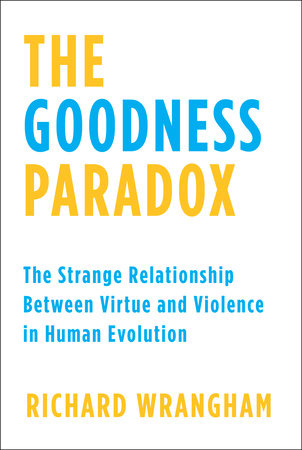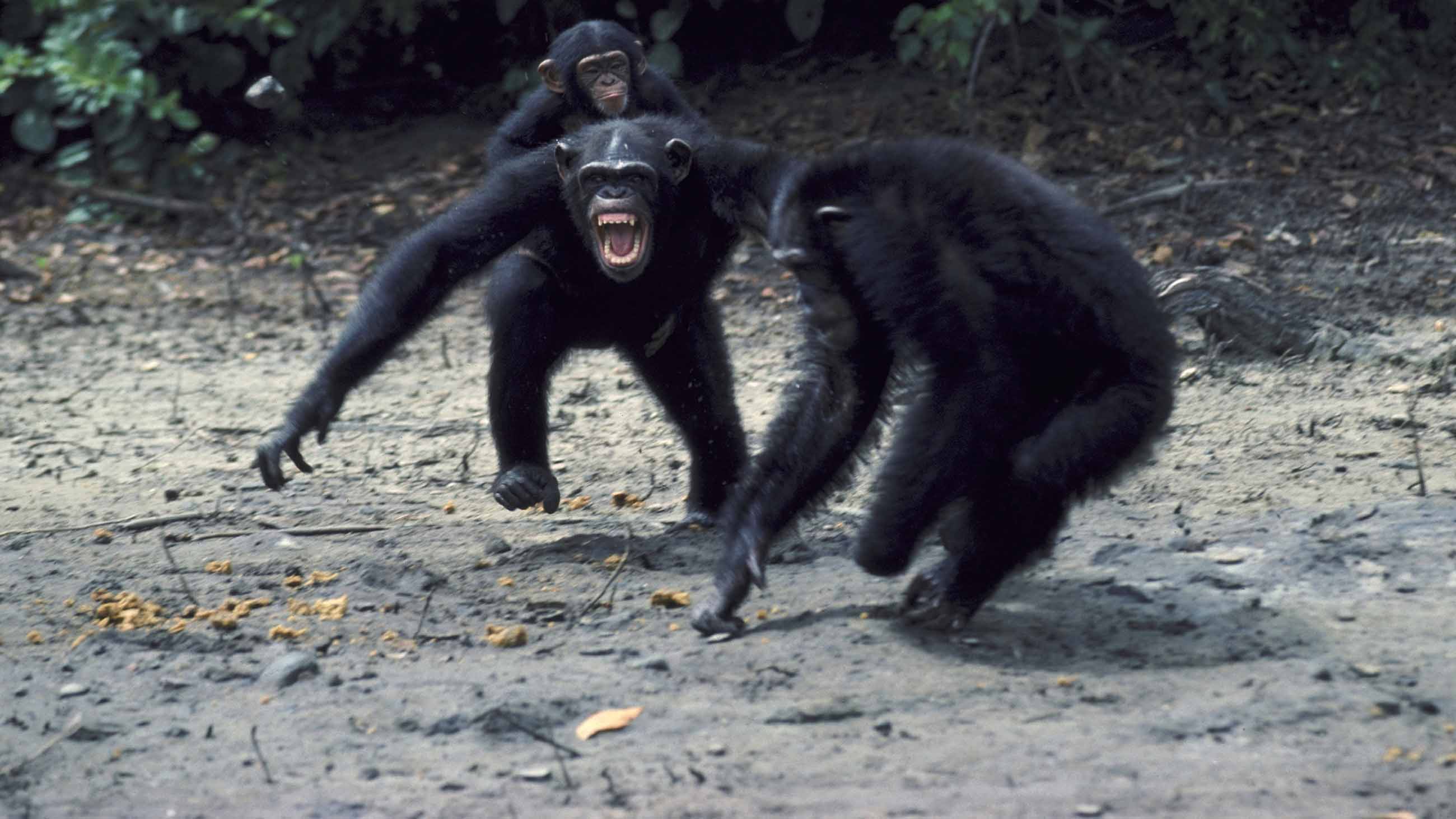According to Jean-Jacques Rousseau, human beings are basically good but susceptible to corruption. Thomas Hobbes declared that we are born morally flawed, and require education in manners and morality. Needless to say, there are many other theories about how we are — in the words of another philosopher, Blaise Pascal — “ni ange, ni bête.” In “The Goodness Paradox: The Strange Relationship Between Virtue and Violence in Human Evolution,” the Harvard anthropologist Richard Wrangham weighs in on the matter.

BOOK REVIEW — “The Goodness Paradox: The Strange Relationship Between Virtue and Violence in Human Evolution,” by Richard Wrangham (Penguin Randomhouse, 400 pages).
The goodness paradox refers to how “we practice exceptionally low levels of violence in our day-to-day lives, yet we achieve exceptionally high rates of death from violence in our wars.”
Wrangham, who frequently draws on his work with great apes, opens with a persuasive and fascinating evolution-based premise. There are two kinds of violence, he writes: the reactive, which is hot and immediate; and the proactive, which is cold and premeditated. We display much less reactive violence than our chimpanzee cousins, he notes, and he thinks it’s due to self-domestication. “Our social tolerance increased even as our bones changed,” he writes. “Our more wolf-like behavior of the past became our more doglike behavior of the present.”
Wrangham neatly illustrates one way in which we differ from chimpanzees: airplanes packed with humans are relatively calm, while the same number of adult chimpanzees in confined spaces would be tearing into each other. Our reactive aggression, he argues, has been tamped down over time, and our species’ belligerence has become more proactive. It all comes down to domestication, a process that has made males more “feminine” — less physically brutish and reactively aggressive — compared to such hominid relatives as the Neanderthals. (He also suggests that it explains the relatively high incidence of human homosexuality.)
The idea that we are domesticated has been around for centuries, often used to rationalize the classification of the world’s peoples according to their degrees of “civilization.” The book seeks to wrestle the idea out of the hands of racists, and instead places biological evidence front and center. Wrangham focuses primarily on genetic contributions to aggressiveness, such as “the stress response, the anxiety circuit, the serotonin-neurotransmitter pathway, and the dynamics of sexual differentiation. Hundreds or thousands of genes can influence complex patterns of behavior.”
In any domesticated species — whether dogs or cows — both young and adults are calmer than the adults of their wild counterparts. He cites a Soviet experiment in the mid-20th century as further evidence that domestication is a biological process highly consistent across species. Within surprisingly few generations of selected breeding, researchers found that silver foxes became tame and more affectionate — and even developed dog-like physical features, including floppy ears and curly tails.
Yet many puppy-like traits, like floppy ears, merely piggybacked onto a gene or multiple genes for less excitable adrenal glands, and these traits served no (obvious) evolutionary purpose. A similar phenomenon could have happened with our own domestication. Human faces are far more “refined” (smoother brow, weaker jaw) than those of our Neanderthal cousins — in fact, our whole skeleton is lighter. Chimpanzees and bonobos have similarly contrasting physiques. These traits, he writes, are “side effects of the selection against reactive aggressiveness.”
Wrangham’s chapters on war and moral reasoning stand out. Jane Goodall and other zoologists, for example, “understood that violence responds to circumstance, not to unstoppable genetic instructions.”
“The Goodness Paradox” wades into controversy when it discusses the “execution hypothesis,” an idea going back to Darwin, which maintains that capital punishment may have helped domesticate humans by culling those more prone to reactive aggression. The end result is fewer and fewer hot-headed, socially disruptive individuals — mainly males — who are prone to murderous outbursts and other crimes against fellow group members. (Unfortunately, it fails to deter aggression between groups.)
The formation of a cohesive group is necessary for planning and implementing punishments, Wrangham argues, and those punishments in turn maintain group integrity. To function properly, capital punishment and associated checks on reactive violence require both the use of language and a commonly held moral rule book.
The very hint that capital punishment could have an upside will surely be distasteful to many readers. Yet the problem with the hypothesis is not that it fails to convince, but that it is too narrow. Domestication and decreased reactive violence may indeed go hand in hand, thanks to selection pressure on bad actors as Wrangham theorizes. But what about collateral damage? Centuries of murderous intolerance for otherness (primarily within groups) have had far-reaching, deleterious effects on human culture by removing possibly useful traits.
Surely “culling” is not the only civilizing factor. Cultural forces must also exert influence on behavioral patterns. Leaders like Nelson Mandela, advocating tolerance and nonviolence, have inspired multitudes. Clearly the human drive to cooperate and maintain social order works not only by executing serial killers and traitors, but by listening to artists and visionaries, and adhering to widely shared customs. Once again, the development of refined linguistic skills is critical for this transmission.
This all calls for a larger, multidisciplinary debate on self-domestication. A single book, even one as engaging and thought-provoking as “The Goodness Paradox,” can only do so much. While Wrangham has much to contribute to the debate over the role of genetics in human aggressiveness, we still have much to learn about how we evolved to become, in Pascal’s words, neither angels nor beasts — but a little bit of both.
Louise Fabiani has written about science and culture previously for Undark, as well as for Pacific Standard, Science, New Scientist, Earth Island Journal, The American Scholar, the TLS, The Rumpus, and many other periodicals. She lives in Montreal.











Comments are automatically closed one year after article publication. Archived comments are below.
I’m a little confused by parts of this article. Humans are not direct descendants of Neanderthals – why compare our respective physiologies as a proxy for domestication? And Neanderthal society was quite similar to our own- how exactly were they “less domesticated?” And to say that our author is trying to “wrest” human breeding/ selection debates from the hands of racists – how exactly? This whole book sounds like racism catnip! Tying in-species physical features to behaviors. That Russian fox study is a fave of eugenecists.
Science is not neutral, pop science lit less so. I’m sure this book is a fun read, I’m sure it will be influential. But it also seems like an attempt to bring theories of human breeding to back to the forefront of popular discussion. What good will that do? The topic is so explosive, so delicate, that any normal-length book is bound to leave room for people who believe all sorts of s**t to take away from it what they will. Why give it extra press? Seems irresponsible.
I think our exceptional capacity for violence and the strong psychological impact that violence has on us individually, frequently blinds us to our equally exceptional capacity for cooperation. I think that it was our capacity for cooperation that allowed us to survive in early millennia of our development, not our capacity for violence. Cooperation doesn’t send off the same alarm bells as violence, but it probably characterizes the vast majority of our interactions with other humans and is a survival trait unmatched in the animal world.
Louise please look at http://www.humancondition.com for the real explanation for how we humans became differentiated from our primate relatives.The reasons for our violent (angry) behaviour has a psychological source unlike the behaviour of the rest of the animal kingdom which is instinctively based.